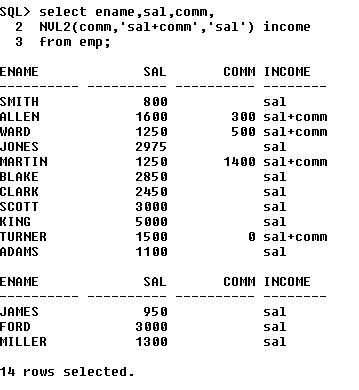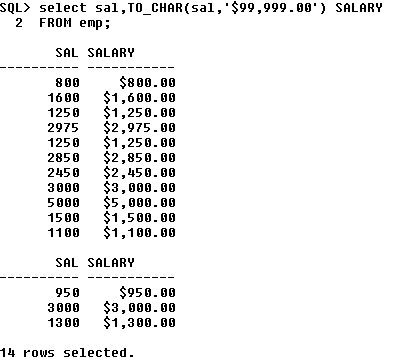- Provide the use of IF-THEN-ELSE logic within a SQL statement.
- Use two methods:
- CASE expression.
- DECODE function.
The CASE Expression
- Facilitates conditional inquiries by doing the work of an IF-THEN-ELSE statement.
Syntax:
CASE expr WHEN comparison_expr1 THEN return_expr1
[ WHEN comparison _expr2 THEN return_expr2
WHEN comparison_exprn THEN return_exprn
ELSE else_expr ]
END
- In a simple CASE expression, Oracle searches for the first WHEN --- THEN pair for which expr is equal to comparison_expr and returns return_expr.
- If none of the WHEN --- THEN pairs meet this condition, and ELSE clause exists, then Oracle returns else_expr.
- Otherwise, Oracle returns null.
- You can't specify the literal NULL for all the return_exprs and the else_expr.
Example:
The DECODE Function
Facilitates conditional inquiries by doing the work of a CASE or IF-THEN-ELSE statement:
Syntax:
DECODE(col|expression, search1, result1
[,search2,result2,...]
[,default])
NOTE:
- The DECODE function decodes an expression in a way similar to the IF-THEN-ELSE logic used in various languages.
- The DECODE function decodes expression after comparing it to each search value.
- If the expression is the same as search, result is returned.
- If the default value is omitted, a null value is returned where a search value does not match any of the result value.
Example:



























